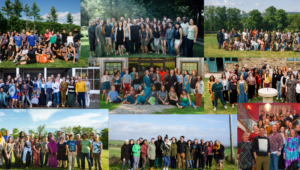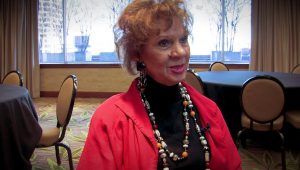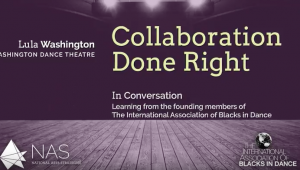Last spring, I spoke with Deborah Cullinan, executive director of San Francisco-based Intersection for the Arts, about her organization’s involvement in a new creative development initiative. The 5M Project, conceived by developer Forest City and operating under the assumption that development means more than erecting buildings, seeks to be “an open place where people who think differently can access each other’s resources, programs, connections and ideas.” It brings together artists, developers, designers, entrepreneurs, food vendors, technologists, manufacturers and more in a shared vision for a new type of community in which each player not only complements but strengthens its counterparts. Intersection produces and presents multi-disciplinary work but also provides a wide variety of artist services, and they’re taking a lead on the placemaking component of the project, 5MPlaceWorks.
The ideas behind Intersection’s experience in becoming part of 5M aren’t just useful to those embarking on large-scale urban development projects. A few years ago, Intersection recognized a need for a new space, but by asking themselves the right questions during their strategic planning process, the organization’s leadership came to realize that they also needed to make a bold change.
Why were they encouraging the 501c3 model in a time when the pool of resources for nonprofits is diminishing? Why, after nearly 50 years and with a strong identity in the community, was the organization still not sustainable? What is the change we want to see as a result of our work? Who needs to be on board to create that kind of change?
Maybe what they needed was not just a new building, but a new model. They needed to become more integrated with the city, and that meant being at the center of not just their own change, but a broader community change.
Cullinan mentions that there are “endless good ideas” in the field. But how does a good idea develop into real change? Horst Abraham, a faculty partner of the Center for Executive Development at the Ross School of Business, suggests that change can be broken down into the following equation:
D(isatisfaction/discomfort) x V(ision) x F(irst steps/catalyst) = Change
The Intersection team gradually realized that, at the beginning of their involvement with the 5M Project, they may have played it too safe. While embracing new partnerships and moving into a shared space in the San Francisco Chronicle building, Intersection retained their black box space in the Mission district. Holding onto elements of the familiar may have provided a sense of security during this initial period of change. But they eventually realized that, by keeping this space, they hadn’t been bold enough.
In order for change to be successful, the equation has to balance. In Intersection’s case, they had their vision and had taken their first steps, but the discomfort was missing. In order to truly change and move to a new model, they had to realize the need to step out of their comfort zone and acknowledge that visual art and performance can happen anywhere, it needn’t be constrained to a particular type of space. And, in doing so, they discovered a new way of presenting work that engages their existing audience while making it accessible to newcomers.
I’ve always felt that arts organizations can’t just produce great work and expect that it will be enough to sustain them, and the field is abuzz with the call for arts organizations to establish and maintain relevance to their communities. Taking this idea a bit further, Cullinan speaks about making the arts a “significant component in the continuum of a healthy community,” rather than just an aspect or attribute of it. But the million dollar question remains: how do you get there?
5MPlaceWorks serves as an example of how to respectfully enter a community in a way that builds meaningful relationships to help not just the newcomers, but the existing residents, artists and businesses thrive. This type of relationship-building helps establish relevance and value in a way that feels organic and sustainable. Instead of seeking out partners who will explicitly benefit them, Intersection approaches potential partners by asking, “What can we do for you?” The result of this approach is that the projects that evolve out of these partnerships are more meaningful and energizing to the community. The community is, in turn, more eager to participate and carry this trailblazing work forward.
“Be the change you wish to see in the world.” – Gandhi
Last year, The New York Times ran an article about some of the most popular misquoted sayings and clichés we hear today, in which the author contends that Gandhi’s closest attributable quotation actually reads:
“If we could change ourselves, the tendencies in the world would also change. As a man changes his own nature, so does the attitude of the world change towards him…We need not wait to see what others do.”
The quote I initially recalled when thinking about my conversation with Cullinan seemed like a good fit, but Gandhi’s actual words describe so much more accurately how we, as a community of artists, administrators, funders and consumers, can help create a fundamental change in the way art is seen, experienced and valued in today’s society.
What are some of the ways that you might begin to change the nature and impact of your work so that the attitude of the world around you might change as well?


